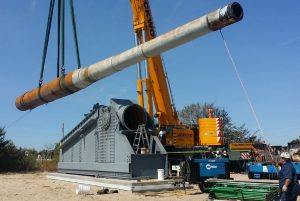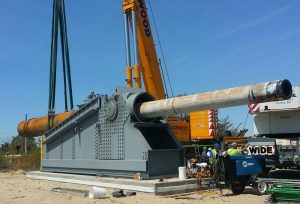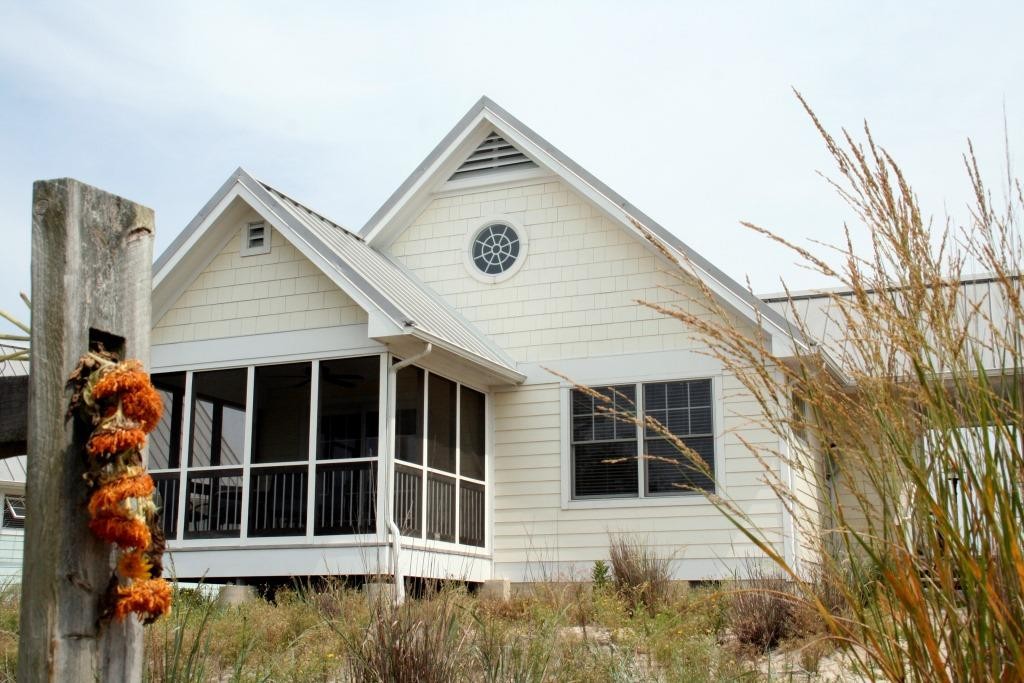LEWES – DNREC’s Division of Parks & Recreation announced today that the popular Cape Henlopen State Park campground has closed to make way for a third and final phase of improvements. Over the past three years, campground improvements have included new bathrooms and additional cabins. When the campground re-opens in June 2017, campers will see new electric hookups, a central path for pedestrian access, new walk-in sites, improved roadways and a new camp store, projects most requested by campers in recent surveys.
The total cost for this final phase is $3.5 million, half of which is covered by a federal Land and Water Conservation Fund grant. The remainder comes from 2017 state bond bill funds.
“With the aid of the Federal Land and Water Conservation Fund grant, the division is in the home stretch for completing significant upgrades to all of our state park campgrounds,” said Delaware State Parks Director Ray Bivens. “This concentrated, three-year effort has brought modern bathrooms, extremely popular cabins and fewer paved surfaces to the campground, making it more eco-friendly.
“When Cape Henlopen’s campground re-opens next spring, campers can enjoy numerous improvements and amenities,” Bivens said. “Wide asphalt roads currently used for RV setups will become one lane with one-way circulation, and concrete pads added for RVs. New walk-in sites will be constructed for campers, similar to those at other popular sites including Trap and Killens Pond state parks, and a limited number of newly-constructed pull-through and drive-in campsites will include electric and water hookups. And the new camp store is an amenity that campers have long requested.”
After multiple years of construction in Cape Henlopen, Lums Pond and Killens Pond state parks, Bivens said the division is prepared to meet the wide array of needs of today’s tent, cabin and RV campers. From primitive camping with no campsite amenities, to three-point hook-up service at 70 sites in Lums Pond Pond State Park, 88 campsites with full hookup service at the North Inlet of Delaware Seashore State Park, upgrades to electric with 50-amp service in two loops at Killens Pond State Park and bathhouse renovations at Trap Pond State Park, state park campgrounds have been modernized to service the camping public.
As construction continues through the fall and winter, parks officials encourage campers to enjoy the state parks system’s other 811 campsites and 32 cabins. The variety of camping experiences in state parks runs the gamut from primitive tent camping to luxury cottages. Delaware State Parks also feature more than 100 miles of trails for hiking and biking, rivers and lakes for boating, and historic and recreational programs.
Fall foliage is especially spectacular in state parks. Campers and other parks visitors can hike the trails or kayak in Trap Pond State Park to capture a stunning spectrum of red and orange colors from the bald cypress, red maple, tupelo and sassafras trees that dot the shoreline and forests. At Killens and Lums Pond state parks, it’s the golden and red hues of the hickory, red maple and black gum that transform the woods into flames of color throughout the month of October. It’s also a great time of year to walk the coastal trails at Delaware Seashore and Cape Henlopen state parks. Campers can also enjoy walking the trails at nearby Burtons Island, Thompsons Island and Fresh Pond.
As DNREC’s Division of Parks & Recreation celebrates its 65th anniversary, and its winning the 2016 National Gold Medal award for Excellence in Park and Recreation Management, the division has measured a 19 percent increase in overnight visits from 2014 to 2015, as camping has become more popular for vacationing.
Delaware State Parks offers a list of events as well as promotional opportunities available throughout the year with weekly and seasonal discounts for campers. To take advantage of these special offers, visit destateparks.com and look for instructions to sign up for the monthly e-newsletter and weekly promotional offers. In addition, visit the website to make a reservation or call the state park call center at 1-877-98-PARKS.
Contact: Beth Shockley, DNREC Public Affairs, 302-739-9902
Vol. 46, No. 337



 The Delaware Division of the Arts is pleased to announce that applications are now open for the 2016 Delaware Seashore Poetry and Prose Writers’ Retreat. The retreat will be held from November 3 – 6, 2016 at the Cottages at Indian River Marina, Rehoboth Beach, Delaware and is open to Delaware residents over the age of 18, not enrolled in a degree or certificate granting educational program. The 2016 participation fee is $300, which includes room and board.
The Delaware Division of the Arts is pleased to announce that applications are now open for the 2016 Delaware Seashore Poetry and Prose Writers’ Retreat. The retreat will be held from November 3 – 6, 2016 at the Cottages at Indian River Marina, Rehoboth Beach, Delaware and is open to Delaware residents over the age of 18, not enrolled in a degree or certificate granting educational program. The 2016 participation fee is $300, which includes room and board.